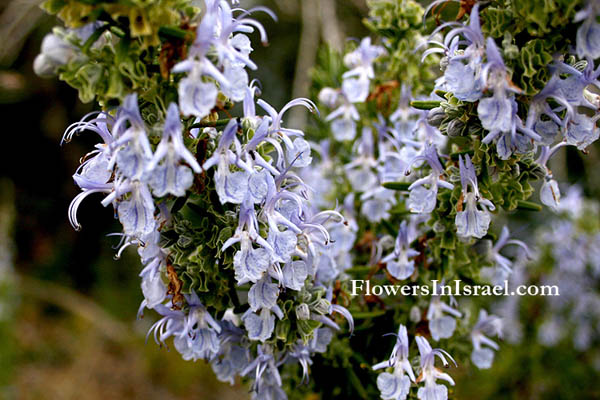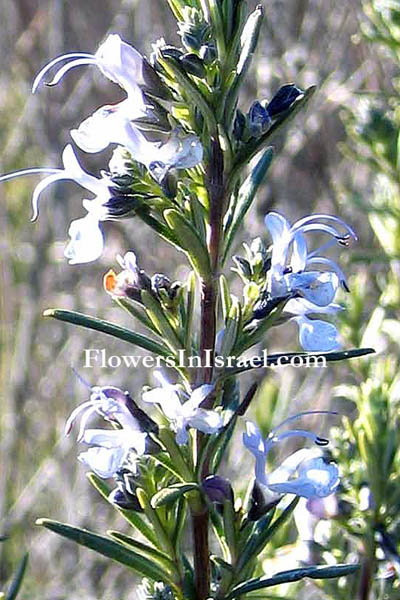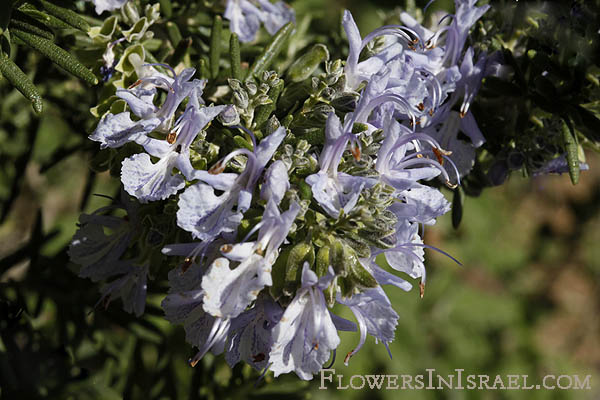Hebrew: רוזמרין רפואי, Arabic: إكليل الجبل
In Shakespeare's Hamlet, Ophelia says, "There's rosemary, that's for remembrance, pray, love, remember."
| Scientific name: | Rosmarinus officinalis L. | |
| Common name: | Rosemary | |
| Hebrew name: | רוזמרין רפואי | |
| Arabic name: | إكليل الجبل | |
| Family: | Lamiaceae, שפתניים |

|
| Life form: | Shrub | |
| Leaves: | Linear | |
| Flowers: | Pale blue or lilac corolla | |
| Flowering Period: | January, February, March, October, November, December | |
| Habitat: | Mediterranean maquis and forest, Batha, Phrygana, Humid habitats | |
| Distribution: | Mediterranean Woodlands and Shrublands, Montane vegetation of Mt. Hermon | |
| Chorotype | Mediterranean | |
| Summer shedding: | Perennating |

Derivation of the botanical name: Rosmarinus, Latin ros, dew; marinus, of or pertaining to the sea, marine. officinalis, officina, herb pharmacy; alias, of or pertaining to; sold as an herb; medicinal. The Hebrew name: רוזמרין, rosemarin, from the scientific name.
There are two kinds of Rosemary; one is barren, and the other has a stalk and a resinous seed called cachrys. The leaves have a smell of frankincense. A local application of the fresh root heals wounds, prolapsus of the anus, condylomata, and haemorrhoids. The juice both of the shrub and of the root cures jaundice and such conditions as call for cleansing. It sharpens the eyesight. ...The herb itself is applied with vinegar to scrofulous sores, and with honey is good for a cough. The ancient Egyptians used a dry shampoo containing rosemary for keeping their hair clean. See the list of Medicinal herbs in Israel, the parts used and their medical uses to treat various diseases. 
Location: Road 395, Martyrs Forest |